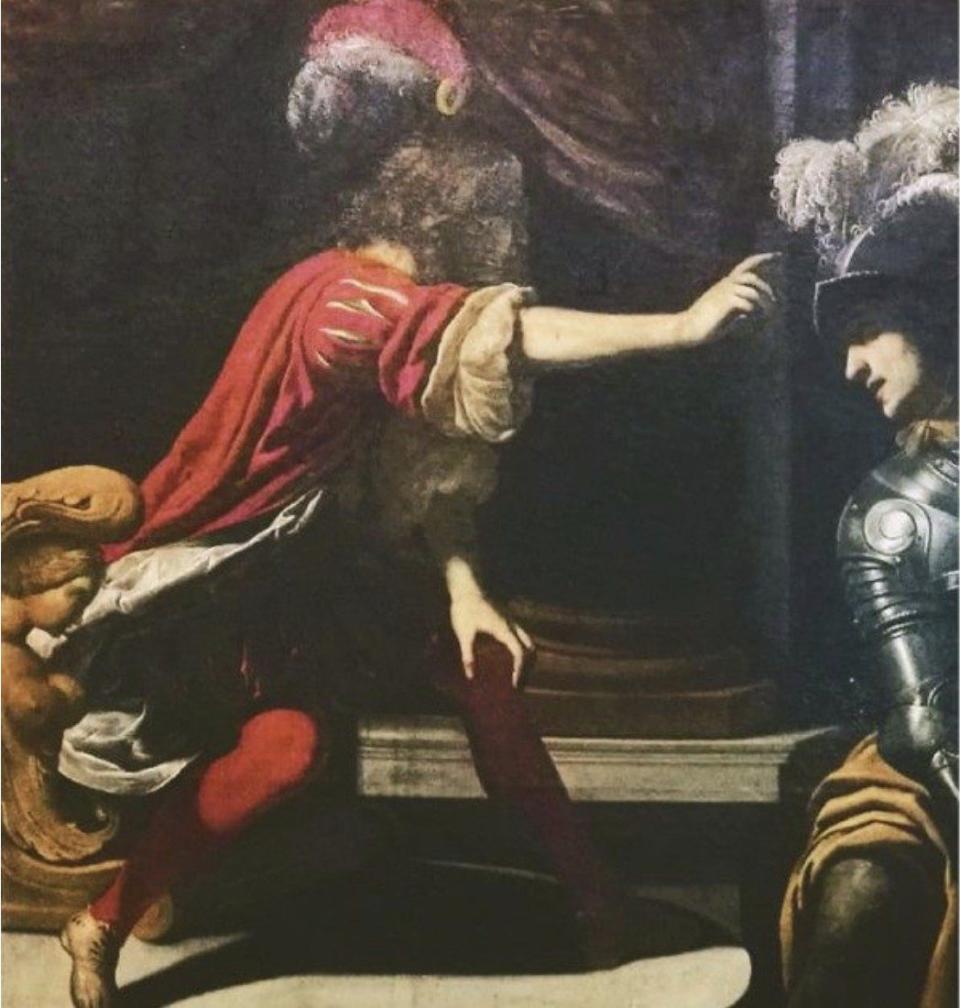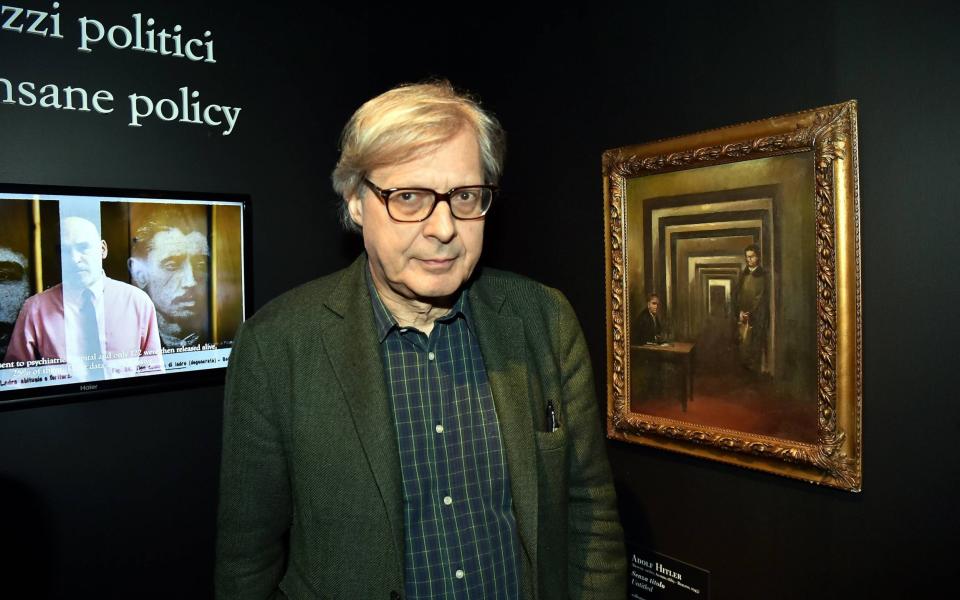An Italian culture minister has been accused of painting a torch on a stolen 17th-century artwork so he could hide it from investigators and keep it for himself.
Vittorio Sgarbi, the junior minister for cultural heritage, allegedly found The Capture of Saint Peter, a painting by the artist Rutilio Manetti, some time after it was stolen from a castle in the northern region of Piedmont in 2013.
The oil painting, believed to have been painted around 1638, was cut from its frame and replaced with a colored photocopy. As a result, it was added to Interpol’s database of stolen items.
It is claimed that Mr Sgarbi found the artwork and hired a professional art restorer to paint over a burning torch attached to a wall bracket in the top left of the painting to make it less recognizable.
The allegedly altered painting is now in the private collection of Mr Sgarbi, who is a high-profile art critic, collector and TV personality as well as Undersecretary for cultural heritage in Prime Minister Giorgia Meloni’s cabinet.
The opposition parties asked Mr. Sgarbi to resign, saying that it is not possible to accuse a minister of cultural heritage of stealing the cultural heritage of his own country.
“Is it compatible with the image of Italy and the Italian government that the minister of culture should be investigated for a stolen picture?” asked Giuseppe Conte, a former prime minister who is now the leader of the opposition Five Star Movement.
“Meloni and (Gennaro) Sangiuliano (the culture minister) should stop defending Sgarbi” and suspend him from his post, said the Democratic Party, the main opposition in the center-left.


Mr. Sgarbi is being investigated for illegally obtaining the artwork and laundering cultural assets, according to prosecutors. He denies the charges, saying the painting belongs to him.
He says he found it in a villa near Viterbo, north of Rome, where Pope Innocent X spent his holidays in the 17th century.
Mr. Sgarbi exhibited it in an exhibition in Lucca in Tuscany in 2021.
The painting pioneered by Caravaggio is the “chiaroscuro” technique, with dramatic lighting contrasting with large slabs of dark background. It is worth around €300,000, according to Italian news reports.
“There is no mystery. There are two pictures,” the minister told an Italian TV channel.
He said he was not informed by prosecutors that he was under investigation and had no intention of resigning.
“I don’t know how I could be under investigation for a theft that I didn’t commit and for a crime that was committed 11 years ago in circumstances that were not explained by investigators at the time.”
He claims it is his original painting and that the painting stolen from Buriasco Castle in 2013, which lacks a burning torch in the left corner, was a “bad copy”, produced in the 19th century.
Mr Sgarbi pointed out that artists often made copies of famous paintings so that there could be different versions.


Art experts, however, say that the position and proportions of the figures depicted in the painting owned by the Minister match exactly those of the painting stolen from the castle in Piedmont.
“Apart from the illuminated torch element, which represents the architectural background on the upper left, the painting owned by (Sgarbi) is objectively identical to the painting stolen from the Castle of Buriasco,” the Association for the Investigation of Crimes against of the Arts, a cultural programme, heritage organisation, wrote a lengthy analysis of the situation.
Mr Sgarbi was angered last summer when he claimed, during an event at a modern art gallery in Rome, that he had slept with hundreds of women.
He told a horrified audience that he viewed his punishment as “an organ of knowledge, that is to say penetration”. While on stage, he took a call on his mobile phone and asked: “Who the f— is this?”
He resisted calls from opposition MPs to resign.
Lynda Albertson, criminologist and chief executive of the Association for Research in Crimes Against Art, said: “The two pictures look very similar. The dimensions and proportions seem to match exactly.
“The technology in the 1800s was not there to copy pictures stroke for stroke, to copy the proportion. But ultimately experts on 17th century Italian art will have to make the decision.”